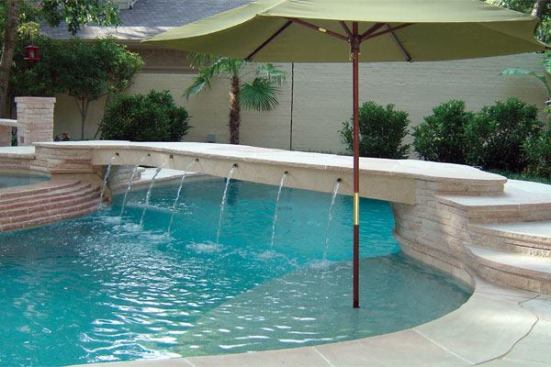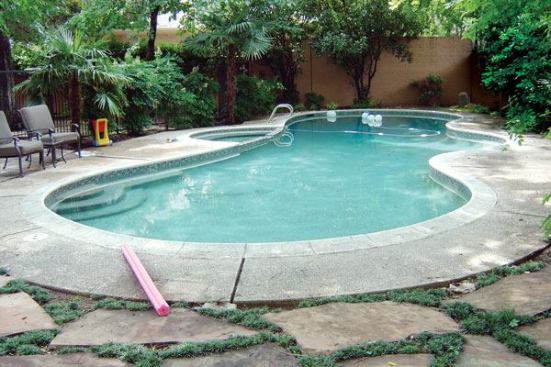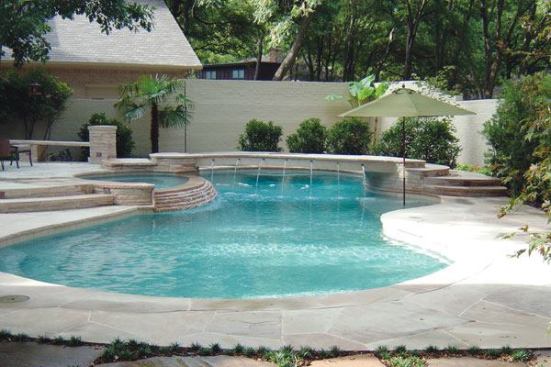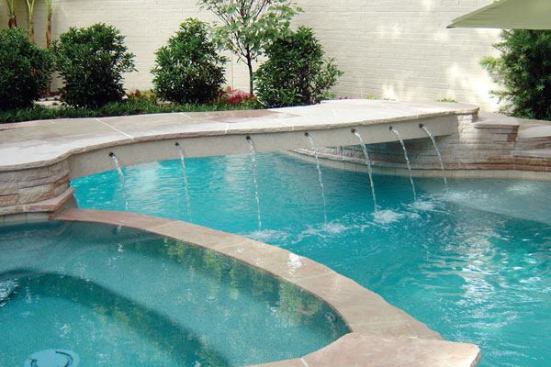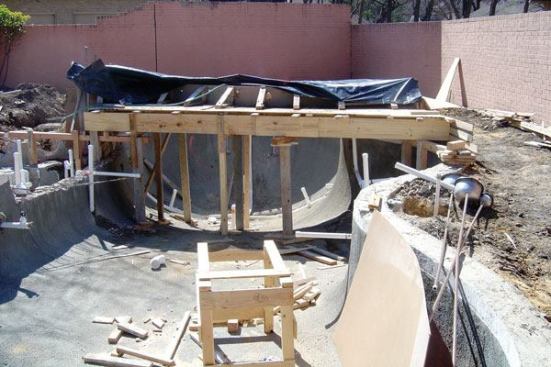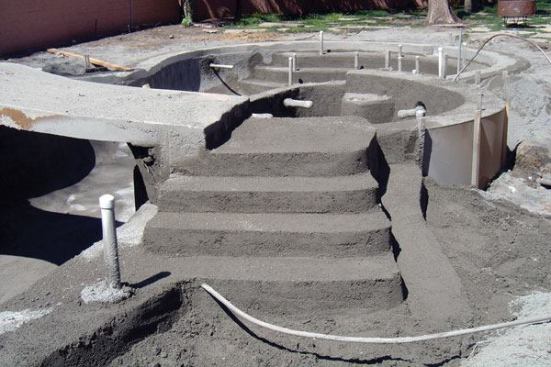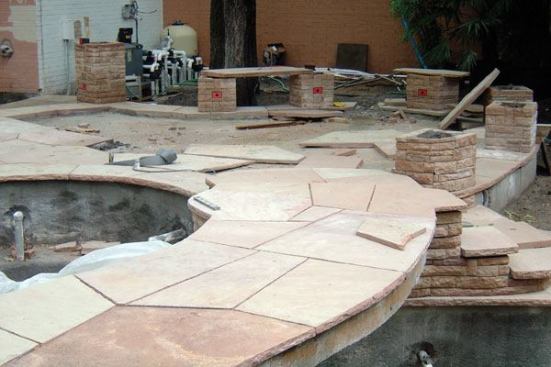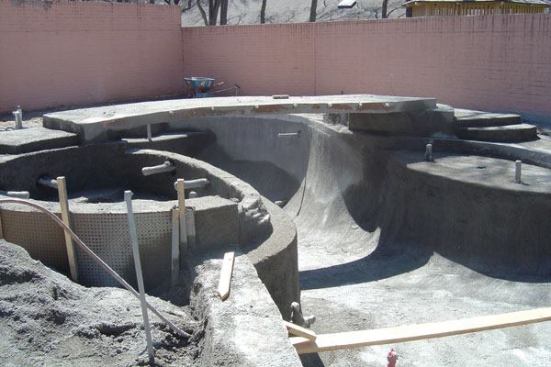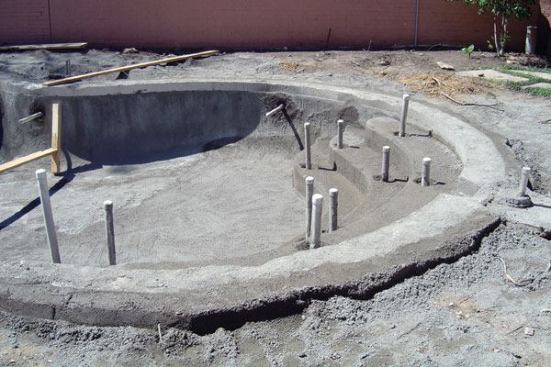Bridge construction
Not only was this the first bridge Wood had ever built, but it was unusually long — between 15 and 16 feet — and it curved to one side. “They didn’t want it to look like this big arch over the pool,” Wood says. “So the bridge appears relatively flat. Because of that, the construction was challenging.”
Wood first consulted an engineer, and they agreed that poured-in-place concrete would produce the sturdiest construction. “Since it was an existing pool, we wanted it to be very controlled, so we decided to build it out of forms,” Wood says. “Because of the unique shape, I didn’t feel like I could maintain that control in doing it all at the same time as guniting the pool. I needed to treat the bridge as its own separate element.”
Wood and his crews used heavy lumber to create a platform supported on the pool floor. But the bridge needed a slight arch on the bottom, which the lumber alone couldn’t offer. “We used such strong plywood that we couldn’t really bow it,” he says. “To shape the underside of the bridge, we backfilled [the wood form] with a really weak mixture of sand and cement, in the shape that we wanted, so we could shape it like you’re building a sand castle. Then we put in a bond breaker and put the steel over that. So when we poured the concrete, it followed the shape of the sand below, but it didn’t stick to it. It’s like we sculpted it.”
No recommended contents to display.
